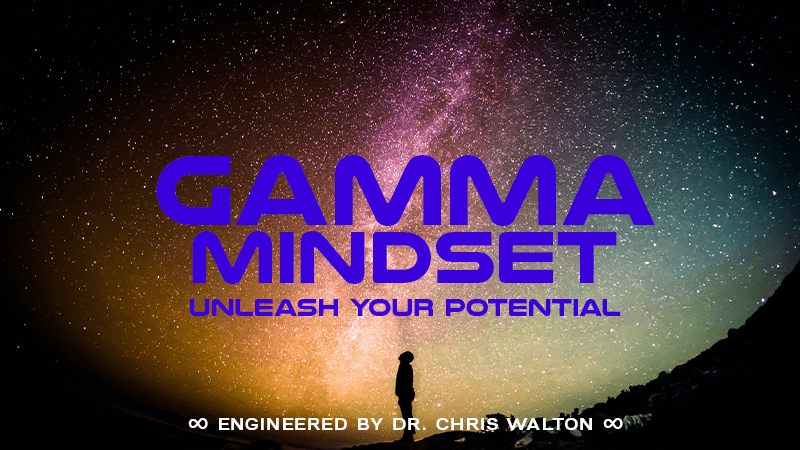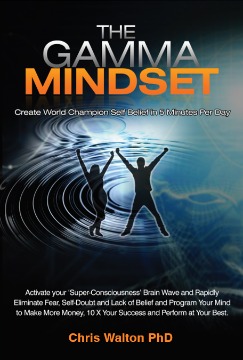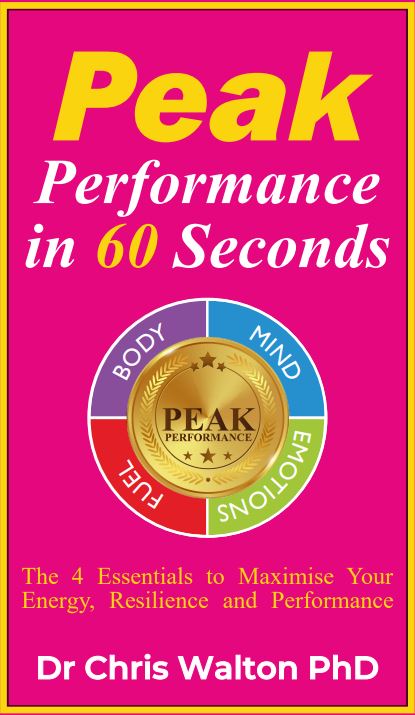It is not the strongest of the species that survives, nor the most intelligent, but the one most responsive to change.
Charles Darwin
How Does Personal Change and Development Happen ?
We each have aspects of ourselves that we want to change. Habits and predispositions that we know aren’t serving us, and unrealized talents we keep promising ourselves we will explore and develop.
Life is about change, and yet many of us realize that life is passing us by while we’re following the old adage;
‘The more things change, the more they stay the same’.
It takes more than willpower and positive thinking to change—and even to discover what it is about ourselves that we want to change. It takes insight into what we might call the ‘hidden’ aspects of ourselves.
Our minds might tell us one thing, but our hearts are whispering something else.
To whom do we most often listen?
Why?
And if we truly do desire change, how can we best achieve it so that it is long-lasting and life-affirming?
One way is to consult an expert, such as a coach or a psychologist. They tend to use psychological assessments to help us gain insight and increase our awareness of our personality strengths and weaknesses, and personal styles and tendencies.
These assessments aim to give us more understanding of our behavioural patterns and to help us foster greater behavioural flexibility, increasing our opportunities for growth.
However, it is possible for you to know yourself more and express more of your potential.
It will help you to first understand the more or less universal human development stages, so you can assess where you are and how you are doing…
Exploring the Stages of Human Development.
Starting in the 1960s, psychologists began to focus on how adults develop, advancing from a baby’s self-centred view of the world to an adult understanding and realisation that we are far more expansive than our ‘personality self’.
Human development was mapped out into what became known as stages, world views or meaning- making systems. I will use the term ‘stages’.
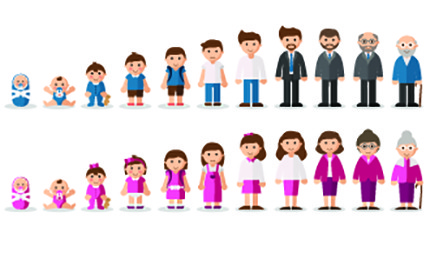
As we move through each stage of development, we acquire more comprehensive and effective strategies for dealing with complexity, as that stage means we have “evolved” in deeper and more expansive ways of engaging ourselves and the world.
The earlier stages of development are often grouped into what’s called the ‘first tier’, and the later or higher stages are referred to as the ‘second tier’.
The highly respected developmental expert and former Professor of Psychology Clare Graves said that when a person moves to the second tier, they;
‘go through a momentous leap of meaning making’.
Human Development is Mapped in Horizontal and Vertical Directions…
Horizontal growth occurs by learning new knowledge and skills, through education and schooling and the experiences of daily life.
We develop horizontally as we strengthen the different types of intelligences we all have, as identified by Harvard psychologist Howard Gardener, such as in IQ, emotional, logical-mathematic, musical, body-kinaesthetic, spatial, interpersonal, intrapersonal and other skills.
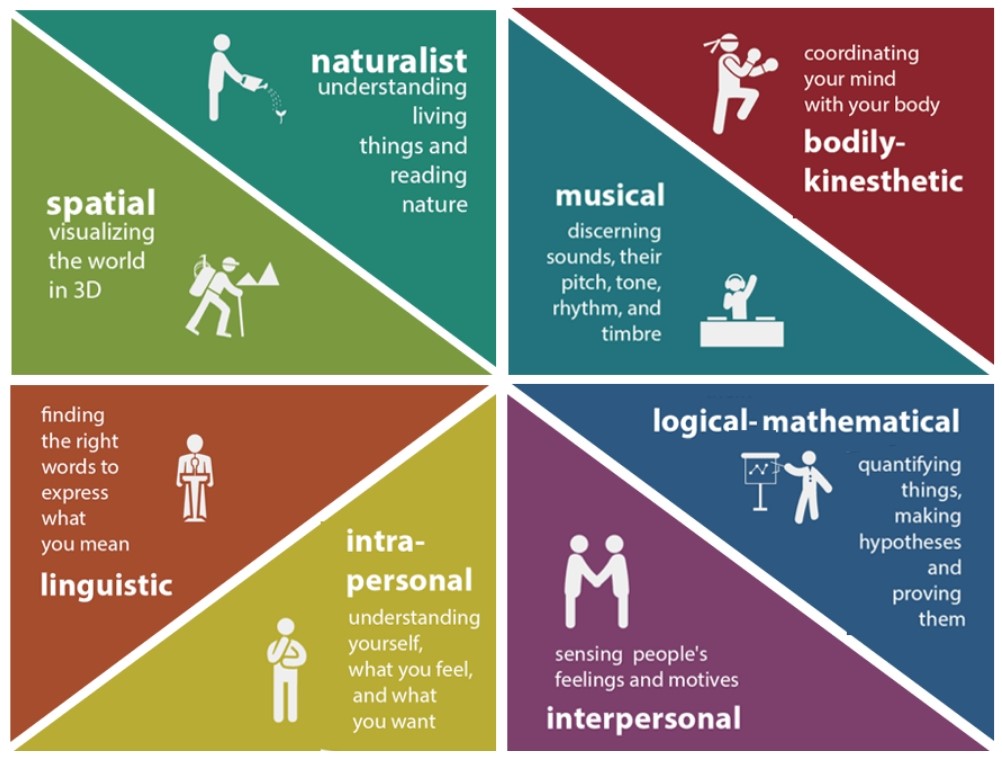
Vertical Development is Much Less Common in the General Population.
Vertical development refers to the ability to shift our world view—to be able to see the world through new eyes, so to speak—and to change our interpretation of our experiences and perceptions as we move through life.
Vertical development increases our openness and level of awareness, fosters our ability to make sense of broader and more diverse perspectives, and expands our ability to both influence our world and integrate our personal experiences.
As we ascend to the second tier and the later stages of development, and as we move from horizontal to vertical development, we increase our likelihood of accessing more of our personal potential and deeper levels of understanding, effectiveness and even wisdom.
After all, human development is really about the baseline state of human consciousness, which means it directly affects our ability to transform what we think and feel about ourselves.
To make the meaning of these stages and tiers clear, I’ll use an extended metaphor…
Imagine there is forest that you walk through regularly to get some exercise and relax.
Even though there are many different paths you could take, no matter which one you select, the scenery is pretty much the same: trees, bushes, birds, squirrels.
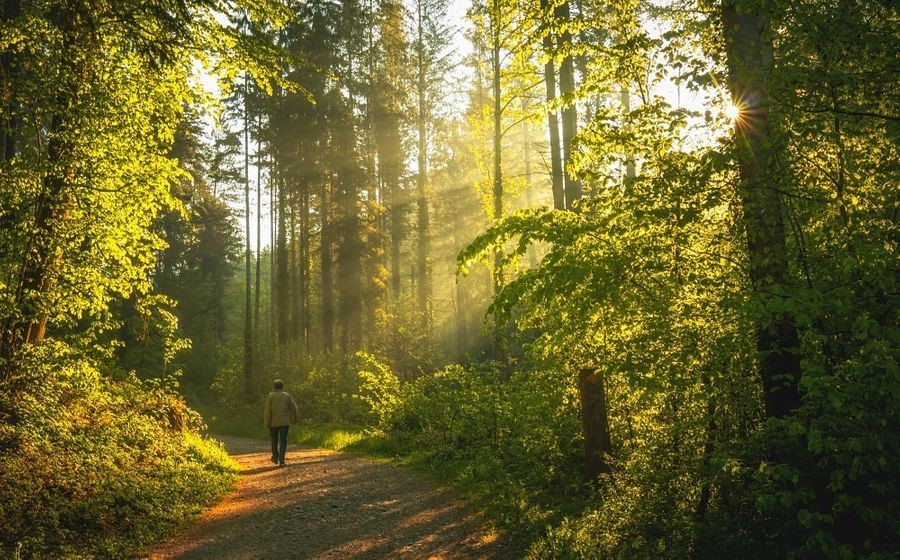
It’s a pleasant and relatively easy walk, with a few hills to negotiate, and it quickly becomes familiar and comfortable.
In fact, it becomes so familiar, that you begin to lose sight of its details, taking the diversity of the forest for granted and walking through it without focusing your awareness.
Now imagine that one day you feel intrigued by a new trail you just noticed, and you veer off your normal route and take it.
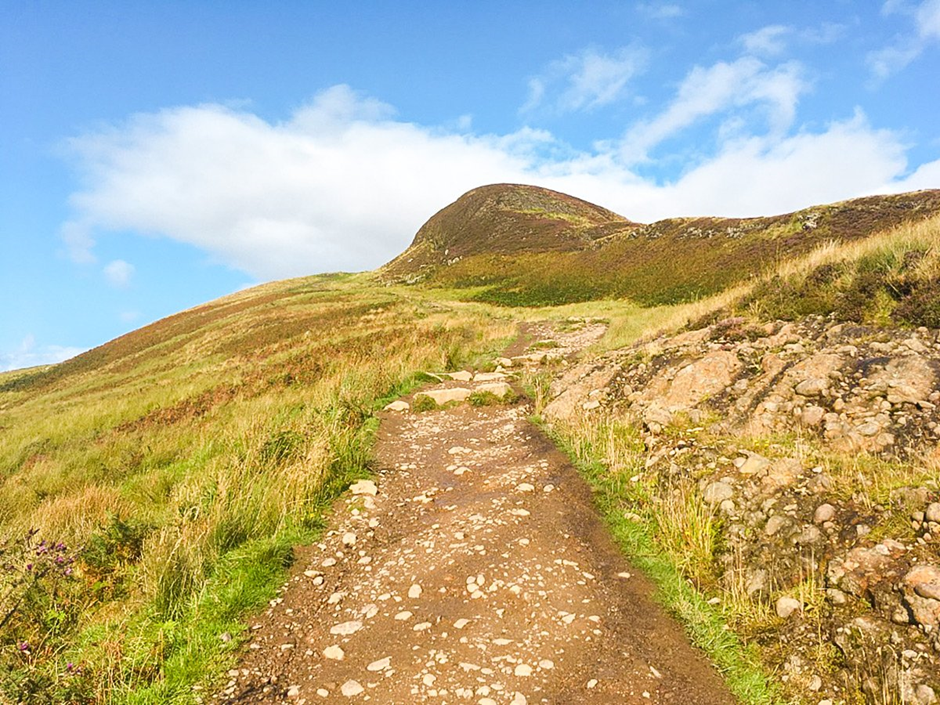
You soon discover that it’s a steeper path, leading up a small mountain, but you stay on it despite the extra effort it takes.
You follow it upward for a while, until you come to the top, where you break out of the forest growth and have a panoramic view.
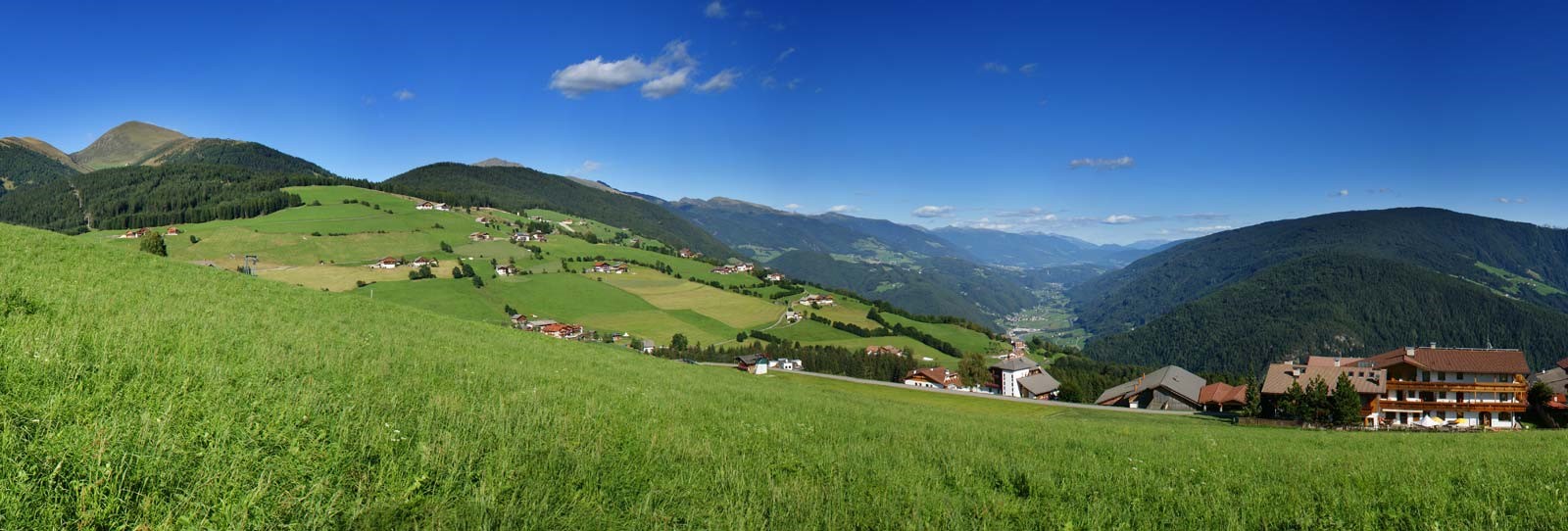
As you look around, you can see some of the familiar paths below in the forest and how they connect.
You can see that beyond one edge of the forest there is a valley, and that a river flows through the valley.
You can even make out a few towns.
You have a whole new appreciation for the forest itself and for how it is situated in the larger landscape.
Early development stages, first tier development and horizontal development correlate to the familiar, with how we grow comfortable with our world, our lives, and our behaviours.
We keep doing the same comfortable things, and we don’t venture too far beyond the existing boundaries of our knowledge and emotions.
We are not risk takers, and neither are we growing very much.
In contrast, when you veer off from the familiar path, you might find yourself on a more challenging journey, but the pay-off is usually a dramatically expanded view of life, wider horizons of experience, a more accurate and detailed knowledge of yourself and how you fit into the world , and so on.
This expansion represents the benefits and gifts of the later developmental stages, the second tier of development and vertical development.
Developmental stages provide a generalised way of understanding how people interpret events and, therefore, how they are likely to act in various situations.
We each have a vast array of potential responses, behaviours and tendencies, and yet we tend to display the same ones over and over.
It’s part of what gives us an identifiable and stable personality to others, but ultimately, we fall into a rut of learned behaviours and responses that may keep us from experiencing the world as fresh and exciting.
Our growth stagnates.

To change and evolve, most of us first have to want to change, and then we have to find effective ways to change our beliefs, for it is our beliefs that either restrict or expand our potential.
Because beliefs reside in the subconscious, change means we have to align our subconscious and conscious selves.
However, your consciousness is not static, and it too can grow and develop.
The Stages of Human Growth and Consciousness.
Most developmental theories divide the spectrum of human consciousness into 4 tiers:
#1 Pre-Conventional
#2 Conventional
#3 Post-Conventional
# Transpersonal.
See Figure below.
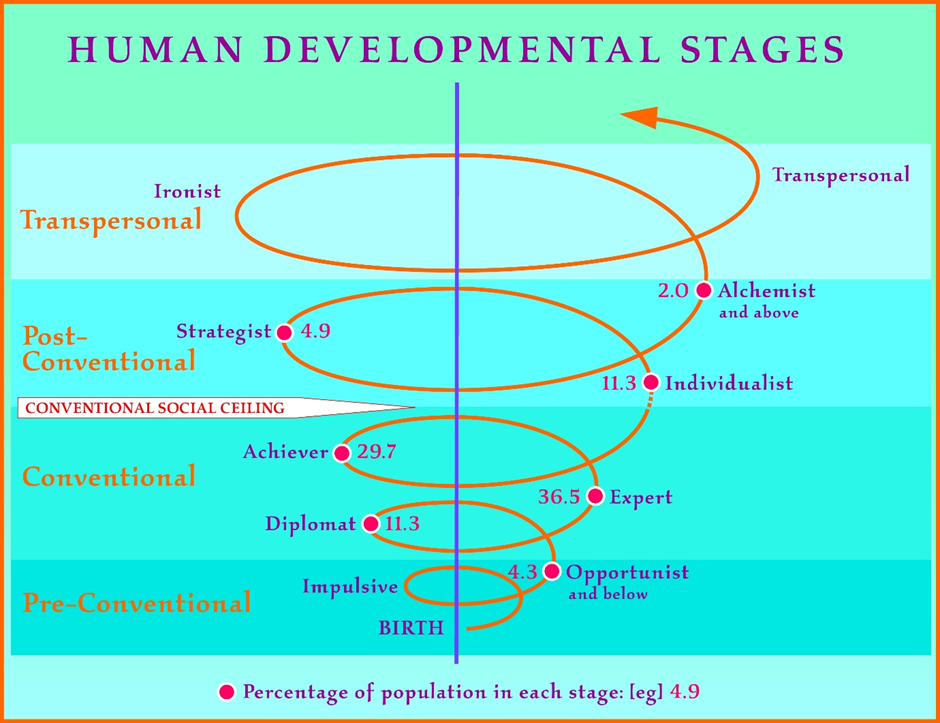
Bill Torbet, Professor Emeritus of Management at the Carroll School of Management at Boston College is one of the most well-respected developmental theorists. He estimated the percentage of the population at each stage which you can see in the image above.
Pre-conventional represents the stage of consciousness of an infant, who is largely self-absorbed and does not relate to the perspective of others.
As the child begins to learn the norms and rules of the culture, he or she moves into the conventional stage.
This stage of consciousness represents a feeling of inclusion, of identifying with and belonging to a group, tribe or nation.
That group provides a feeling of safety and security, so anyone or anything outside of that group tends to be excluded or questioned.
As a person continues to develop, he or she may reach the post-conventional stage of consciousness, where his or her sense of identity widens to include people that may be unlike him-or herself.
The person is open and accepting of people no matter what their race, colour, gender, nationality and so on…
If a person continues along a path of growth, he or she may move into a stage of transpersonal, where he or she identifies with and cares for all beings, human and non-human, and feels that there is one, integrated cosmos of which he or she is a part.
It’s a more ‘universal or cosmic consciousness’.
Each stage in this model has its own fundamental belief structures that guide the people at that level as to their style and range of thinking, feeling and acting.
Generally speaking, a person who has reached the later stages of development can understand the earlier world views, but a person at an earlier stage has difficulty understanding the later stages.
As the Figure above shows;
Approximately 80% of people in modern society function at the conventional stage…
Only about 10% to 20% demonstrate post-conventional world views.
Very few people have reached the transpersonal stage of consciousness.
How Do We Create Vertical Development and Move Up the Spiral ?
Vertical development first and foremost starts with assessing and updating your belief systems: your conscious and subconscious idea of who and what you are, and your reason for being.
For the most part, the shift from stage to stage vertically, does not happen suddenly, but is the result of continuous small steps forward in your journey of self-actualization and personal evolution.
Change is often accelerated by personal practice and by coming into contact with people who are already at the stage you are seeking to achieve or are already moving toward.
They can help ‘show you the way’ so to speak.
With our understanding today of the significance of the mind-body relationship and of how ‘Energy Psychology’ can facilitate the processes of deep personal change, you can make more rapid progress in your vertical development.
This is a time in human history when such progress is being asked of us not only for our personal benefit but also so that we can meet the challenges of our world and change it for the better.
The tools are available on a wide scale to help us achieve the highest positive expression of ourselves and of our culture, nation and even the world.
As Ervin Laszlo, PhD, and Jude Currivan, PhD, explain in their book Cosmos:
‘We are living in a momentous era when powerful evolutionary and indeed revolutionary processes are playing out.
We are individually and collectively waking up as if from a long slumber of amnesia.
Not only are we acknowledging our innate abilities to perceive on non-local levels, but our awareness is expanding beyond the limitations of our personality-based sense of self’.
Inevitably the first step to moving up the spiral and expressing more of our potential starts with changing our belief systems about who we are, what we are doing here and what we can achieve.
This could be your next step…
